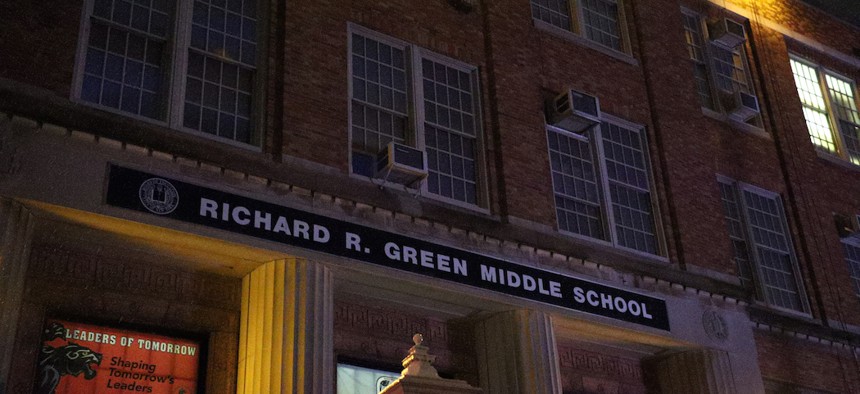It was reported on Tuesday that 178,000 of New York City’s public school students, a record number, will be required to take remote summer school classes, after the academic year was derailed by the COVID-19 crisis. “Any summer, there’s the possibility of learning loss over the summer – that could be a greater challenge in a summer like this,” New York City Mayor Bill de Blasio said during a Tuesday press briefing. “It’s going to be a huge effort, an unprecedented effort.”
One out of every six public school students, about 18% of the city's student population, will now need to take classes over the summer. About 67,000 students from third to eighth grade, as well as 83,000 students from grades nine through 12 will be required to take extra classes this summer. And 27,700 students with disabilities, who typically require individualized attention and many of whom are entitled to year-round schooling, will also need to take additional classes.
The city’s summer school will last a total of six weeks, beginning in July and ending in August. Students in grades three through eight will receive lessons four days a week, while high schoolers and students with disabilities will receive lessons five days a week. Overall, the city’s summer school program is expected to cost $83 million and is anticipating a need for 6,000 teachers, who are being asked to sign up to teach remote summer lessons this week.
Despite the city relaxing its grading methods, given the unprecedented COVID-19 crisis, summer school is still necessary for many who did not have the tools needed for remote schooling and those who were in charge of taking care of a family member or became sick themselves.
The city’s remote summer school program will be slightly different from the program it has offered throughout the remainder of the academic school year, as it will offer more live lessons, scheduled at an appointed time. The city is also hoping to provide students enrolled in its summer school with virtual field trips and the opportunity to participate in social clubs. This was not feasible for many students during the school year, as many students were without internet access or the computers or tablets necessary to participate in online lessons, since city schools closed on March 18.
David Bloomfield, an education professor at both the City University of New York’s Graduate Center and Brooklyn College, told City & State that the high number of students expected to attend summer school isn’t necessarily an indication of a failing school system. In fact, it may demonstrate that standards are being upheld and students who need extra help will get it. “It's actually good news, in the sense that probably many more students than those captured by the new grading policy are in need of catching up,” Bloomfield said. “It also shows that teachers were conscientious on that grading policy, rather than just passing everyone – which was an initial possibility. At the same time, it also demonstrates the extreme deficiencies of online learning.”
The city was criticized in late March, when remote learning began, for not immediately supplying students with the equipment required to fully participate in their remote schooling. About 300,000 of the city’s 1.1 million students were without the tools required for remote learning once remote lessons began, such as home computers, which remains a big problem. Just this week, the city delivered 284,000 internet-enabled devices, such as iPads, to students in need of them and is expected to deliver another 5,000 in the near future.
However, other students faced difficulties keeping up with their remote lessons as they were in charge of caring for their siblings or a sick family member, or were sick themselves. One-on-one support from social workers, counselors and teachers will also be offered to students over the summer. Bloomfield argues that in-person checkups from health care workers and social workers would be especially beneficial for students who are often in charge of looking after others, and for students with disabilities, rather than checking in with them online. “In Germany, home health care workers are making home visits,” he said. “And that would also be possible in terms of social workers and related service providers in the special education realm.”
NEXT STORY: MTA tests high-tech super-cleaners


